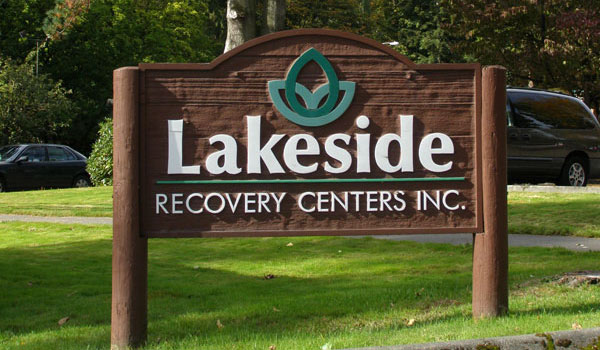Most people know that certain substances do not go together, and that using them at the same time may have life-threatening consequences. Chief among these substances are benzodiazepines, alcohol, and opioids. When combined, these drugs may cause severe side effects or even death. Recent research published in the JAMA Network indicates that the presence of respiratory-depressing drugs in opioid overdose deaths is increasing.
Benzodiazepines and Alcohol Involved in Opioid Overdoses
It is well-known that the use of benzodiazepines and alcohol with opioids increases a person’s overdose risk. To date, however, little was known about the interaction of these drugs with specific opioid subtypes. The present study, undertaken by the Boston University School of Medicine, sought to identify trends in the prevalence of alcohol and benzodiazepine co-involvement in opioid overdose deaths among each subtype of opioid.
Researchers conducted a cross-sectional analysis using data from the CDC’s WONDER (Wide-Ranging Online Data for Epidemiologic Research) database. The information ranged from January of 1999 to the end of 2017 and covered all of the United States. Data was also gathered from the Behavior Risk Factor Surveillance System of the CDC and IMS Health’s commercial database. It took researchers nearly one year to analyze all of the information.
From 1999 to 2017, 339,230 poisoning deaths involved opioids. Of these, 66% were male, and nearly half were between the ages of 35 and 54. Alcohol involvement increased from 12.4% of deaths in 1999 to 14.7% of them in 2017. By opioid subtype, deaths involving synthetic opioids and heroin had the highest alcohol co-involvement (around 15%).
Benzodiazepine co-involvement also increased, but its change was more pronounced. While only 8.7% of opioid overdose deaths in 1999 also involved benzos, that number jumped to 21% in 2017. They were present in 33.1% of prescription opioid overdose deaths and 17.1% of synthetic opioid overdoses in 2017.
State-level rates of binge drinking and benzodiazepine prescribing rates were both significantly correlated with the involvement of alcohol in opioid overdose deaths.
Important Research Highlights Potential Target for Policy
Killing more than 70,000 people in 2017, poisoning deaths have become the leading cause of unintentional injury death in the US. The surge of preventable deaths is attributable to the opioid epidemic; many of the people counted in poisoning deaths overdosed on an opioid.
However, in spite of this trend, the researchers noted that there was little information about the interaction between respiratory depressants (specifically benzodiazepines and alcohol) and various types of opioid drugs (such as fentanyl/synthetic opioids, prescription opioids, and heroin). Researchers believe that highlighting this co-involvement will be helpful in developing policy initiatives in overdose prevention efforts.
In 2016, almost half of opioid overdoses involved cocaine, benzodiazepines, or alcohol. Polysubstance use is extremely common and carries its own set of health and psychiatric risks – perhaps the most significant of these is the chance of an overdose. Medical co-prescribing, experimentation, and contamination can all contribute to polysubstance use involving opioids.
This study is the first to characterize benzodiazepine and alcohol co-involvement prevalence by opioid subtype through the entirety of the opioid epidemic. Hopefully, this will inspire policymakers to identify risk factors and prevention strategies for opioid overdose deaths on a large scale.
What to Do in the Event of an Overdose
If someone you love is experimenting with benzodiazepines and alcohol in addition to opioids, they are at high risk of an accidental overdose. It is important to know how to react in the event of an opioid overdose.
The first step is knowing the signs of a potential overdose. Common symptoms include…
- Change in body temperature (notably higher or lower)
- Weakened pulse
- Dilated or pinpoint pupils (depending on the substance)
- Chest pain
- Difficulty breathing
- Airway obstruction
- Making strange noises (gurgling or choking sounds)
- Blue lips or fingers
- Nausea and vomiting
- Impaired motor skills
- Confusion and disorientation
- Violent or aggressive behavior
- Irregular heartbeat (slower or faster than normal)
- Seizures
- Losing consciousness
- Seeming sleepy or “out of it”
If your loved one exhibits any of these signs, they may be having an overdose. First, you should dial 9-1-1. Ask questions or keep them talking in order to keep them awake if possible. If they are not breathing, turn your loved one onto their side. Then, give first aid as the 9-1-1 operator directs. If you have Narcan available, this is the time to administer it. You may also be instructed to give CPR until medics arrive. The most important thing to do is to remain calm and act quickly. If you have information about what your loved one has been taking and when they most recently took the drug, this can be immensely helpful to emergency responders.
If someone you love is misusing benzodiazepines and alcohol in addition to opioids, they are in danger. We encourage you to seek professional treatment for them as soon as possible. At Lakeside-Milam, we have helped more than 100,000 people from across the Pacific Northwest to find recovery. To learn more about our comprehensive addiction treatment services, please contact us today.






